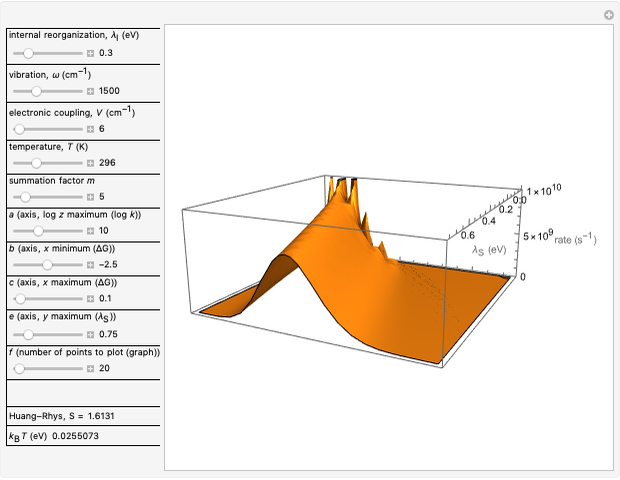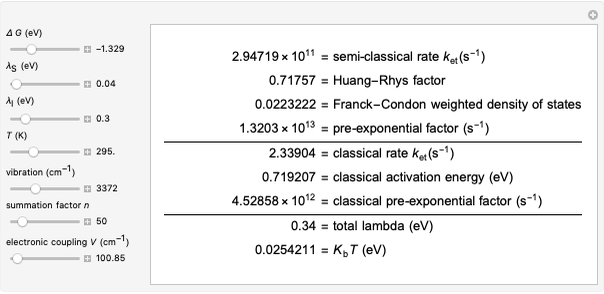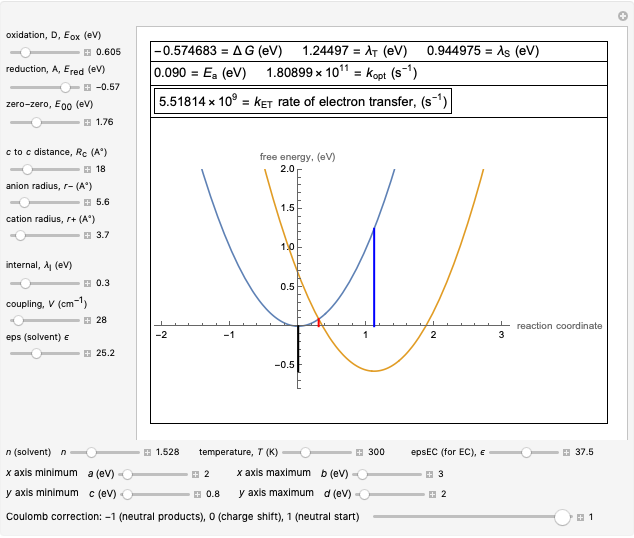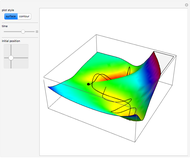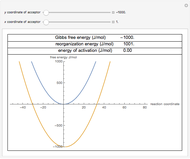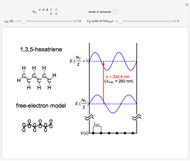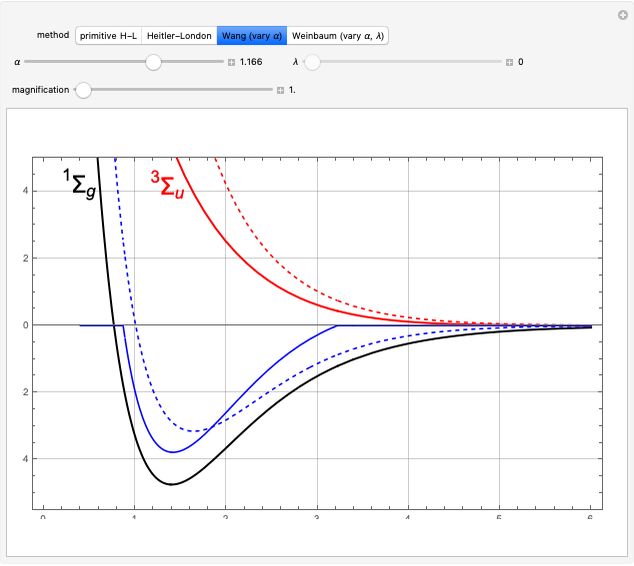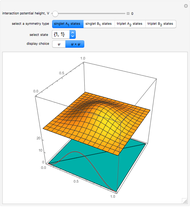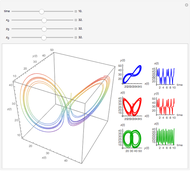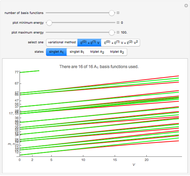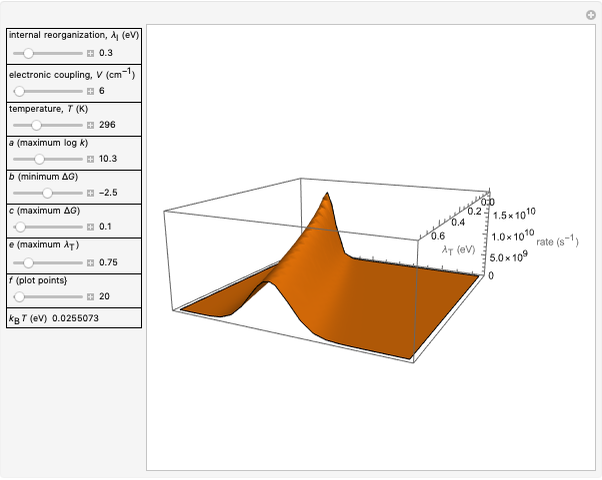Marcus Theory of Electron Transfer 4: Classical Marcus Equation in Three Dimensions

Requires a Wolfram Notebook System
Interact on desktop, mobile and cloud with the free Wolfram Player or other Wolfram Language products.
This Demonstration describes the classical Marcus model in three dimensions. The rate  is plotted on the
is plotted on the  axis as a function of the Gibbs free energy change
axis as a function of the Gibbs free energy change  and the total reorganization energy
and the total reorganization energy  . This is a linear plot; often
. This is a linear plot; often  is plotted in this application.
is plotted in this application.
Contributed by: René M. Williams (August 2022)
Open content licensed under CC BY-NC-SA
Snapshots
Details
Snapshot 1: increasing the solvent reorganization energy makes the curve more broad, lower and shifted to the right
Snapshot 2: note the shaper curve at 77 K. With lower  , the maximum attainable rate increases within the classical Marcus model show a sharper, higher peak.
, the maximum attainable rate increases within the classical Marcus model show a sharper, higher peak.
Snapshot 3: in the high temperature limit, the semiclassical Marcus equation reduces to the classical Marcus equation; note the broadening of the curve at 1000 K
The results of this Demonstration were checked against the R-package [10] that runs in the statistical software package R [11] for computing and graphics.
References
[1] R. A. Marcus, "Electron Transfer Reactions in Chemistry: Theory and Experiment (Nobel Lecture)," Angewandte Chemie International Edition, 32(8), 1993 pp. 1111–1121. doi:10.1002/anie.199311113.
[2] S. Chaudhuri, S. Hedström, D. D. Méndez-Hernández, H. P. Hendrickson, K. A. Jung, J. Ho and V. S. Batista, "Electron Transfer Assisted by Vibronic Coupling from Multiple Modes," Journal of Chemical Theory and Computation, 13(12), 2017 pp. 6000–6009. doi:10.1021/acs.jctc.7b00513.
[3] P. F. Barbara, T. J. Meyer and M. A. Ratner, "Contemporary Issues in Electron Transfer Research," Journal of Physical Chemistry, 100(31), 1996 pp. 13148–13168. doi:10.1021/jp9605663.
[4] G. L. Closs and J. R. Miller, "Intramolecular Long-Distance Electron Transfer in Organic Molecules," Science, 240(4851), 1988 pp. 440–447. doi:10.1126/science.240.4851.440.
[5] P. Hudhomme and R. M. Williams, "Energy and Electron Transfer in Photo- and Electro-active Fullerene Dyads," Handbook of Carbon Nano Materials (F. D'Souza and K. M. Kadish, eds.), Hackensack, NJ: World Scientific, 2011 pp. 545–591. doi:10.1142/9789814327824_0017.
[6] R. M. Williams. "Introduction to Electron Transfer." (Nov 11, 2021) doi:10.13140/RG.2.2.16547.30244.
[7] R. M. Williams. Photoinduced Electron Transfer—The Classical Marcus Theory [Video]. (May 17, 2022) youtu.be/YFzeMMOvhl0.
[8] R. M. Williams. Photoinduced Electron Transfer—The Semi-classical Marcus–Levich–Jortner Theory [Video]. (May 17, 2022) youtu.be/GnPIbH6nM9o.
[9] R. M. Williams. University of Amsterdam. (May 17, 2022) www.uva.nl/en/profile/w/i/r.m.williams/r.m.williams.html.
[10] J. Idé and G. Raos. "ChargeTransport: Charge Transfer Rates and Charge Carrier Mobilities." (May 17, 2022) CRAN.R-project.org/package=ChargeTransport.
[11] "What Is R?" The R Foundation. (May 17, 2022) www.r-project.org/about.html.
Permanent Citation














